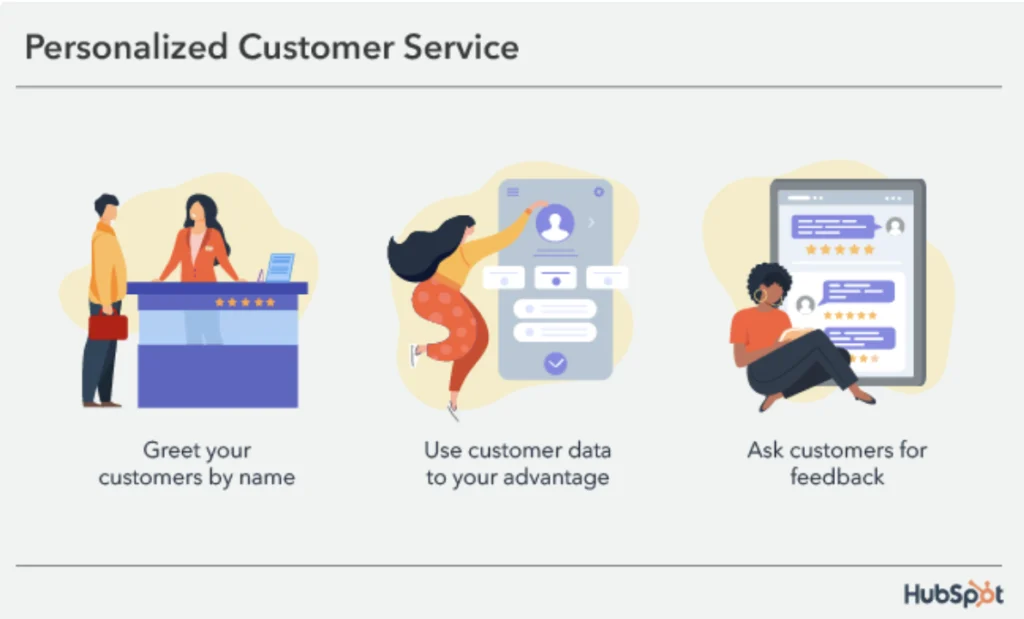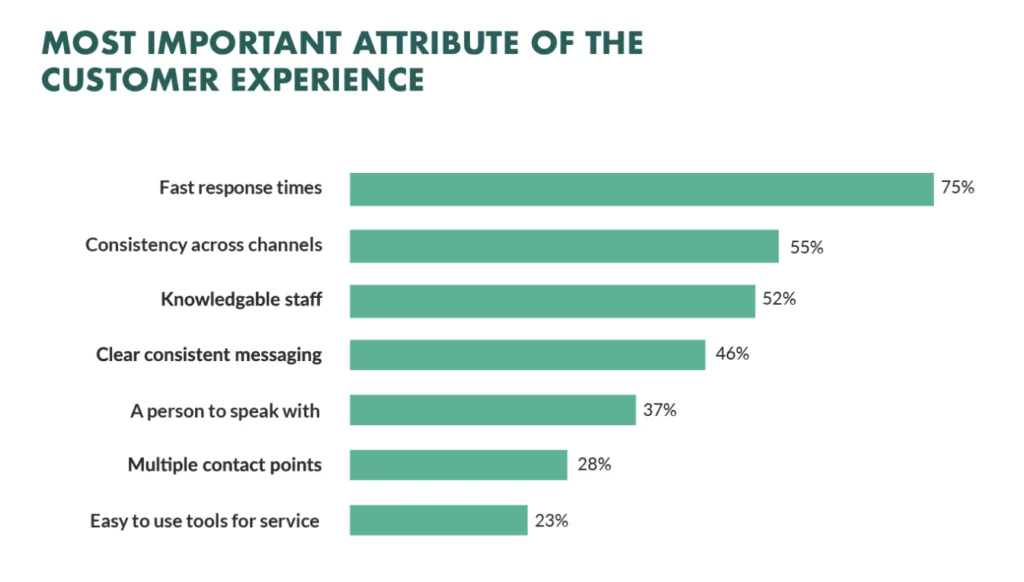8 Customer Service Best Practices to Follow in 2023
Keeping up with customer service best practices feels like playing a game of mini golf. After you win each round, you move on to the next with longer courses, more obstacles, and additional challenges. Today, customer service can occur in person, over the phone, on social media, and through chatbots. Each channel provides new opportunities for personalizing customer experiences but also comes with additional challenges.
Learn the best practices to stay on top of customer service trends and emerging tech in 2023.
Key Takeaways:
- Connect your customer data to provide a unified experience across all your customer service channels.
- Customers want a personalized experience, which you can provide through extensive training and data collection practices.
- Modern chatbots and software allow customer service to respond faster and more effectively to customer inquiries.
1. Unify Your Departments
Customers want a seamless experience across all touchpoints within your company. To deliver this, customer service should maintain a high level of quality at every stage of customer lifecycle marketing – from the purchase stage to post-sale support.
Customers also want all departments to have a similar understanding of them and their needs. To provide this unified customer experience, you need to centralize customer data. That way, no matter who is connecting with your customers, they’ll all have the same information about that customer and share similar advice.
For example, a good customer service agent should be able to see a customer’s past purchases, previous interactions, and personal information every time that customer calls. This allows them to offer the most personalized and relevant solutions to the customer.
2. Train Your Agents
The best customer service practices require communication and problem-solving skills. Your agents also need to have a deep understanding of your business and services.
Through regular training, your agents will learn efficient ways to address customer questions and which departments to forward callers to for each request. Training not only ensures consistent service from all agents but also enables faster resolution of customer issues.
If you want to access agents with the necessary training and skills, consider outsourcing your customer service through an agency with highly trained agents.
3. Personalize Your Service
While your customer service agents should have templates for addressing customer concerns, they shouldn’t offer cookie-cutter solutions. Customers in 2023 expect personalized care.
Businesses should collect customer data and research their audience to customize their approaches for each customer.
When a customer calls, the agent should understand who they are and what they need. For example, if a B2B buyer contacts your business, the agent should be able to offer business solutions relevant to that buyer’s industry.

4. Speed Up Your Customer Service
Gone are the days when customers had to endure long wait times on hold waiting for an agent. For many businesses, though, that’s still happening, negatively impacting the customer experience.
Customers don’t like to wait, especially if they’re already frustrated with a product or service. Customers agree that a fast response time is the most important factor in a positive experience.
Companies can make a positive impression by responding quickly to customer questions and resolving issues on the first call.
In 2023, you have more options than ever to offer that support level. ChatGPT and Google Bard promise a future of chatbots that provide human-like service. Outsourcing customer service also ensures you have around-the-clock live agents available at scale, so you’re always ready to help.

5. Use Active Listening
Experienced customer service agents understand that they must listen more than talk. After all, the customer comes before service. In the same way, you need to understand the customer before you can provide the service.
Reflective listening provides the best results for agents. In reflective listening, agents actively listen to customers to discover the intent behind their requests. Then, they repeat what they heard to check with the customer that they understand them correctly.
This process helps the customer feel heard and ensures the agent doesn’t misinterpret the customer’s concern, allowing them to offer the most relevant solution.
6. Anticipate Customer Needs
Customer service begins before the customer reaches out with questions or requests. Usually, when a customer reaches out for help, a problem or question already arose.
To achieve the greatest customer satisfaction levels, companies should proactively address potential concerns before they arise.
Some resources a business might offer to help customers fully understand the brand, products, and uses include:
- Onboarding to train new users on how to use software.
- Regularly publishing blog posts that provide new insights and answer potential questions.
- Active social media presence that informs customers about the industry.
- Customer community for customers to share their insights with others.
You can also set up alerts so your team can reach out to the customer with solutions when issues pop up, like software crashes, instead of waiting for the customer to call customer support or service.
7. Offer Multiple Customer Service Options
While speaking to a live agent is popular among customers, not everyone wants to go that route. Reasons such as long wait times, inconvenient call times, or a dislike of talking on the phone may prompt customers to seek support elsewhere.
Businesses can cut down on their customer service call volume and offer alternatives for customers through a variety of channels, including:
- Social media messengers
- Website chatbots
- Live chat (like on an app)
- Email support
- FAQ pages
8. Analyze Customer Interactions
Past customer service interactions are a valuable source of information on what works and what needs improvement. A best practice for your customer service department is to regularly go back and review their performance – to identify their strengths and weaknesses.
By setting customer service goals, you can compare your results against your desired outcomes for more precise performance benchmarks. It can also help you measure your sales growth.
For example, tracking customer interactions tells the department how many agents can resolve customer service requests on the first call. It can also tell how long each customer service interaction takes, how many people are calling in, and even if customers have similar questions or concerns. When multiple customers have the same question, customer service might proactively address it to avoid future inquiries.
Customer feedback surveys are another valuable resource for analyzing customer satisfaction. After every customer interaction or service, send a survey to ask the customer about their experience, what they enjoyed, and where you can improve.
Enhance Your Customer Service Best Practices
Does your customer service strategy need an extra boost to resolve customer inquiries more effectively?
Televerde can help you update your customer service processes. Our highly trained customer service agents use the most powerful practices and cutting-edge techniques to provide the best strategies for 2023 and beyond.
Contact us to learn more about our customer service options.


